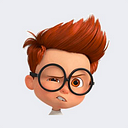Humans 101
How the ‘Magic: The Gathering’ Color Wheel Explains Humanity
Move over, Myers-Briggs
Published in
Apr 3, 2018
Hi, all! You’re probably here looking for my color wheel article. Well, Medium put it behind a paywall without my permission, and in a way that I couldn’t undo. So I’ve rehosted it for free in the same place where you can find all of my future writing. (And where you can subscribe to me, if you want to.)

